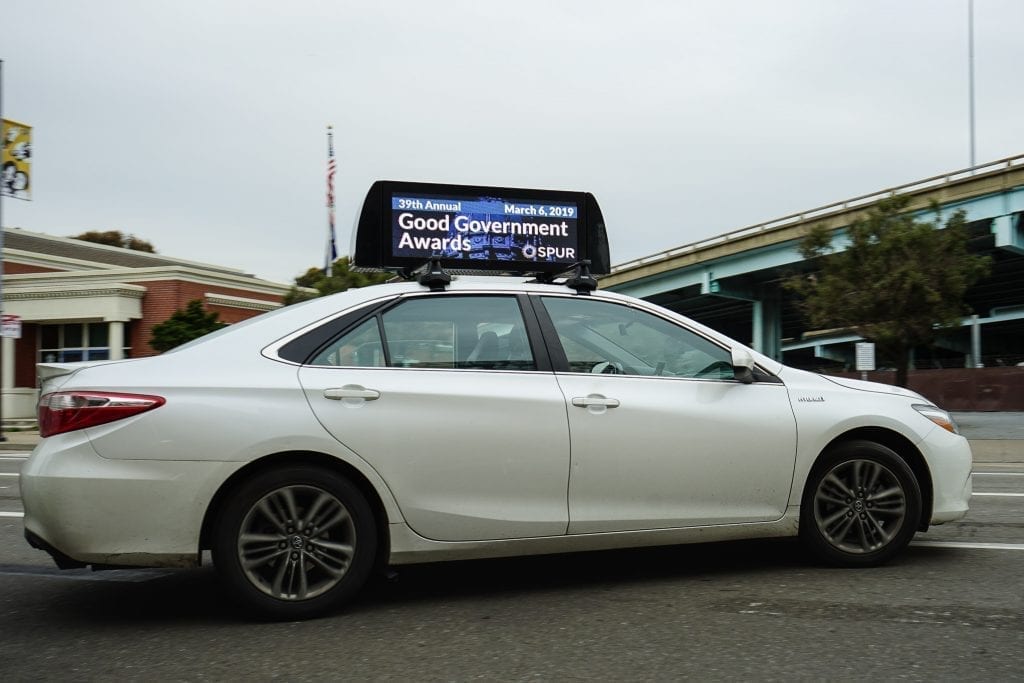Could a millennial entrepreneur change the landscape of the next generation of smart cities?
If Firefly CEO Kaan Gunay has his way, cities will soon be subsidizing public transit with advertising revenue and we’ll be living in data-enabled smart cities.
While many technologies have advanced greatly over the past thirty years, a lot of things remain pretty limited. Outside of tech connected directly to the World Wide Web, such as smartphones and web browsers, data use remains siloed to different sectors.
That’s due, in part, to how difficult it is to gather data and get the data to the right people. With digital devices connected to the web, collecting data is straightforward. You can simply measure clicks, page views, and the like. This data has helped turn our phones smart. But can something similar be done with cities and municipalities?

Gunay believes it’s possible, but in order for cities to be smart, you have to gather a lot of data with strong partnerships. That’s where Firefly comes in. Founded by Gunay, Firefly is a mobile advertising company that puts outdoor smart screens on top of cars, and specifically rideshares and taxis that spend a lot of time on the road. Drivers are, in turn, compensated.
This idea isn’t so novel, although it is effective. Rolling outdoor advertisements draw views and are more effective than traditional billboards when it comes to making an impression with an urban audience. Firefly estimates it generates 150 million hits per month, even though it has rolled out services in just a few test markets. Still, other companies offer similar billboards.
Where Firefly distinguishes itself is in generating useful data. While the mobile ads look like traditional mobile billboards, they’re actually rolling data collection tools. Each mobile smart screen is equipped with a range of sensors that can measure things like temperature, starts and stops of the vehicle, air quality, and humidity. So once the smart screens are mounted onto cars, those cars become mobile data collection tools.
Of course, for the data collection efforts to work, the smart screen equipped cars need to spend a lot of time on the road. That’s why Firefly focuses on rideshares and taxis. Drivers can rack up a lot of miles in a day’s work. In 2017 alone, Uber was responsible for 4 billion rides, meaning their drivers are responsible for billions of miles driven per year.
By equipping rideshare drivers with sensors, Firefly should be able to generate tremendous amounts of data. This, in turn, could create a new generation of smart cities. So what is a smart city anyways? Armed with local, granular data, local city leaders will be able to better plan for and accommodate traffic, pedestrian movement, and other important planning decisions. Local leaders may also be able to better combat pollution by tracking air quality and other factors.
And cities are just starting to “learn.” More data will be required to make cities smart but local planners will have to first figure out what they need. Firefly has a unique partnership model that makes this learning possible. They initially partnered with organizations like the Coalition for Clean Air, San Francisco Department of Public Works, and People Assisting the Homeless to spread vital messages to communities.
What are some of the things we might see in the future of smart cities? For one, simple timed traffic lights will likely become history. Traffic lights that respond to real-time traffic conditions should enable more efficient traffic flows. Local planners will also be able to understand pedestrian traffic better, potentially increasing safety.
As city planners figure out how to make cities smarter, they’ll demand more data. Collecting real-time data on a city-wide scale isn’t easy, but Firefly could make it possible. Firefly is dedicated to providing rideshare drivers with an opportunity to earn more money and businesses with a way to connect with customers. Someday, however, advertising might be secondary to Firefly’s larger mission of making smart cities a reality.
Investors have been lining up behind Firefly, believing in the company’s “smart” future. The company has raised $21.5 million in funding so far. And Firefly is already proving its data collecting capabilities and market uptake, having played nearly 1 million hours of content as of February 2019. Firefly is currently active in Los Angeles and San Francisco and will be expanding operations in the near future to New York and Miami, according to the company.
So far, Firefly has focused on developing and protecting its tech. In the long run, this should help Firefly secure its place in the marketplace. For the rest of us, this could also mean a new generation of smart cities could one day become a reality.






